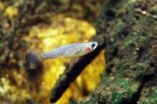(Press-News.org) Plant biologists are facing pressure to quantify the response of plants to changing environments and to breed plants that can respond to such changes. One method of monitoring the response of plants to different environments is by studying their vein network patterns. These networks impact whole plant photosynthesis and the mechanical properties of leaves, and vary between species that have evolved or have been bred under different environmental conditions.
To help address the challenge of how to quickly examine a large quantity of leaves, researchers at the Georgia Institute of Technology have developed a user-assisted software tool that extracts macroscopic vein structures directly from leaf images.
"The software can be used to help identify genes responsible for key leaf venation network traits and to test ecological and evolutionary hypotheses regarding the structure and function of leaf venation networks," said Joshua Weitz, an assistant professor in the Georgia Tech School of Biology.
The program, called Leaf Extraction and Analysis Framework Graphical User Interface (LEAF GUI), enables scientists and breeders to measure the properties of thousands of veins much more quickly than manual image analysis tools.
Details of the LEAF GUI software program were published in the "Breakthrough Technologies" section of the January issue of the journal Plant Physiology. Development of the software, which is available for download at www.leafgui.org, was supported by the Defense Advanced Research Projects Agency (DARPA) and the Burroughs Welcome Fund.
LEAF GUI is a user-assisted software tool that takes an image of a leaf and, following a series of interactive steps to clean up the image, returns information on the structure of that leaf's vein networks. Structural measurements include the dimensions, position and connectivity of all network veins, and the dimensions, shape and position of all non-vein areas, called areoles.
"The network extraction algorithms in LEAF GUI enable users with no technical expertise in image analysis to quantify the geometry of entire leaf networks -- overcoming what was previously a difficult task due to the size and complexity of leaf venation patterns," said the paper's lead author Charles Price, who worked on the project as a postdoctoral fellow at Georgia Tech. Price is now an assistant professor of plant biology at the University of Western Australia.
While the Georgia Tech research team is currently using the software to extract network and areole information from leaves imaged under a wide range of conditions, LEAF GUI could also be used for other purposes, such as leaf classification and description.
"Because the software and the underlying code are freely available, other investigators have the option of modifying methods as necessary to answer specific questions or improve upon current approaches," said Price.
LEAF GUI is not the only software program Weitz's group has developed to investigate the network characteristics of plants. In March 2010, Weitz's group co-authored another "Breakthrough Technologies" paper in Plant Physiology detailing a way to analyze the complex root network structure of crop plants, with a focus on rice.
This work was performed in collaboration with Anjali Iyer-Pascuzzi, John Harer and Philip Benfey at Duke University and was supported by DARPA, the National Science Foundation and the Burroughs Welcome Fund.
"Both of these software programs are enabling tools in the growing field of 'plant phenomics,' which aims to correlate gene function, plant performance and response to the environment," noted Weitz. "By identifying leaf vein characteristics and root structures that differ between plants, we are enabling advances in basic plant science and, in the case of crop plants, assisting researchers in identifying and potentially altering genes to improve plant health, yield and survival."
INFORMATION:
In addition to those already mentioned, Olga Symonova, Yuriy Mileyko and Troy Hilley also contributed to this work at Georgia Tech.
These projects were supported by the Defense Advanced Research Projects Agency (DARPA) (Award No. HR0011-05-1-0057), National Science Foundation (NSF Plant Genome Research Program Award Nos. 0606873 and 0820624) and Burroughs Wellcome Fund (BWF). The content is solely the responsibility of the principal investigator and does not necessarily represent the official views of DARPA, NSF or BWF.
New software quantifies leaf venation networks, enables plant biology advances
2011-01-14
ELSE PRESS RELEASES FROM THIS DATE:
What is life? New answers to an age-old question in astrobiology
2011-01-14
New Rochelle, NY, January 13, 2011–Biologists have been unable to agree on a definition of the complex phenomenon known as "life." In a special collection of essays in Astrobiology, a peer-reviewed journal from Mary Ann Liebert, Inc., leaders in the fields of philosophy, science, and molecular evolution present a variety of perspectives on defining life. Tables of content and a free sample issue are available online.
Why is a definition of life so important yet so elusive? As David Deamer, Guest Editor and Research Professor of Biomolecular Engineering, University of ...
Suicide risk greater for people living at higher elevations
2011-01-14
New Rochelle, NY, January 13, 2011—Twenty years of mortality data from counties across the United States led to the striking discovery that living at higher altitudes may be a risk factor for suicide, according to a provocative study published online ahead of print in High Altitude Medicine & Biology, a peer-reviewed journal published by Mary Ann Liebert, Inc. The article is available free online.
Barry Brenner, MD, PhD, and David Cheng, MD, University Hospitals Case Medical Center (Cleveland, OH), and coauthors Sunday Clark, MPH, ScD, University of Pittsburgh Medical ...
Women less interested than men in jobs where individual competition determines wages
2011-01-14
Men are more likely than women to seek jobs in which competition with coworkers affects pay rates, a preference that might help explain persistent pay differences between men and women, a study at the University of Chicago shows.
The study, which covered most of the nation's largest metropolitan areas, also revealed regional variation in how much women desire jobs in which competition plays a role in determining wages. In cities where local wages are generally lower, women tend to want jobs in which competition determines wages, the study showed.
"We know that women, ...
Electricity pricing policies may make or break plug-in hybrid buys
2011-01-14
WEST LAFAYETTE, Ind. - California policies aimed at reducing electricity use and curbing greenhouse gas emissions have the unintended consequence of making new plug-in hybrid vehicles uneconomical, according to a Purdue University economist.
Wally Tyner, the James and Lois Ackerman Professor of Agricultural Economics, said California's tiered electricity pricing system means Californians will pay some of the highest electricity rates in the country to recharge plug-in hybrid vehicles. States with flat electricity rates or those that vary price based on the time of use ...
Next-generation hospital design can improve health -- and save money
2011-01-14
(Garrison, NY) Extra large private hospital rooms with plenty of natural light and artwork may seem like unaffordable luxuries, but new research shows that these and other architecture and design features can improve patient care and in the long run reduce health care expenses. They are among the elements of the "Fable hospital," an ideal health care facility as conceived and analyzed by leaders in health care and design. Elements of the Fable hospital are being adopted on the ground today, with the imperative to improve quality and value.
A set of articles in the Hastings ...
Driving simulators help older adults improve their road skills
2011-01-14
Older drivers could benefit from training programs that put them behind the wheel—in a driving simulator, with an observer who helps them develop their skills. That's the conclusion of a new article published in Current Directions in Psychological Science, a journal of the Association for Psychological Science.
Older people are at much higher risk of car crashes than younger drivers. Some states and provinces test older drivers, hoping to get the riskiest drivers off the road. But the tests they use are inadequate, says Normand Teasdale of Université Laval in Québec, ...
Self-assembling structures open door to new class of materials
2011-01-14
CHAMPAIGN, Ill. — Researchers at the University of Illinois and Northwestern University have demonstrated bio-inspired structures that self-assemble from simple building blocks: spheres.
The helical "supermolecules" are made of tiny colloid balls instead of atoms or molecules. Similar methods could be used to make new materials with the functionality of complex colloidal molecules. The team will publish its findings in the Jan. 14 issue of the journal Science.
"We can now make a whole new class of smart materials, which opens the door to new functionality that we couldn't ...
More than 31 freshwater species have 'moved' to Galicia over past century
2011-01-14
Galician researchers have studied the evolution in the introduction of non-native fresh water species in Galicia over the past century, and have compared this with the rest of the Iberian Peninsula. The results show that 31 exotic aquatic species out of the 88 recorded for the entire Iberian Peninsula have become established in the region over the past century.
An analysis of the introduction of non-native species in Galicia and the Iberian Peninsula carried out by researchers from the University of Santiago de Compostela (USC) and the University of Coruña (UDC) has shown ...
Scientists sequence gut microbes of premature infant
2011-01-14
Scientists have for the first time sequenced and reconstructed the genomes of most of the microbes in the gut of a premature newborn and documented how the microbe populations changed over time.
Further studies involving more infants could eventually help researchers understand the causes of various intestinal problems that afflict preemies, in particular the sometimes fatal necrotizing enterocolitis, according to researchers at the University of California, Berkeley, the University of Pittsburgh School of Medicine and Stanford University. One unresolved question is whether ...
MIT neuroscientists explain 'Proustian effect' of small details attached to big memories
2011-01-14
CAMBRIDGE, Mass. – Neuroscientists at MIT's Picower Institute of Learning and Memory have uncovered why relatively minor details of an episode are sometimes inexplicably linked to long-term memories. The work is slated to appear in the Jan. 13 issue of Neuron.
"Our finding explains, at least partially, why seemingly irrelevant information like the color of the shirt of an important person is remembered as vividly as more significant information such as the person's impressive remark when you recall an episode of meeting this person," said co-author Susumu Tonegawa, Picower ...





